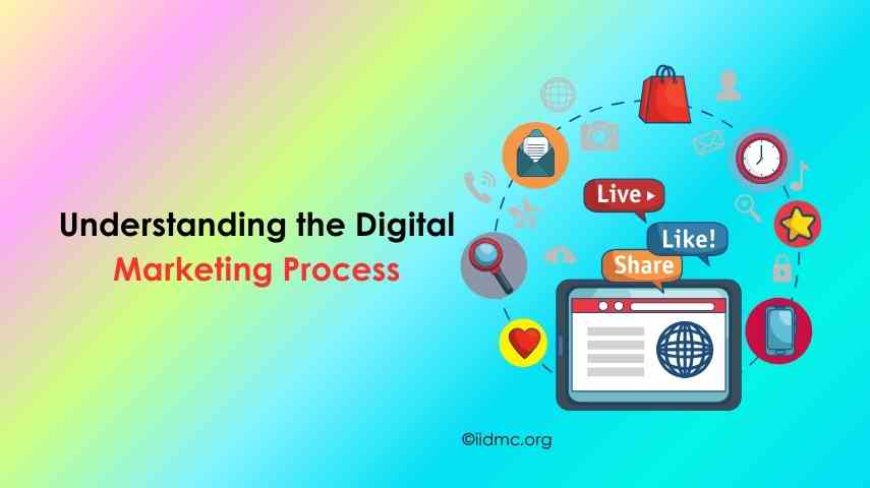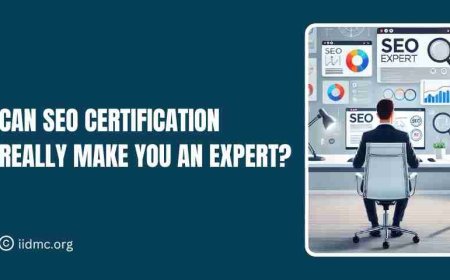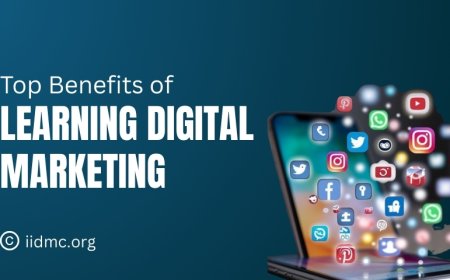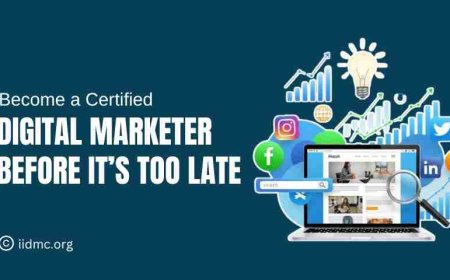Understanding the Digital Marketing Process
Discover the essential steps and components of the digital marketing process. Learn about SEO, content marketing, social media, email campaigns, and PPC, and how to develop and execute a successful digital strategy for your business.

Understanding the digital marketing process is crucial for businesses looking to survive in today’s competitive world. It involves a series of strategic steps designed to attract, engage, and convert potential customers online. From building brand awareness through various digital channels to optimizing content for search engines, each stage of the process plays a vital role in achieving business goals. In this blog, we’ll break down the key components of the digital marketing process, offering insights into how they work together to improve success in the digital world.
What is digital marketing?
Digital marketing is the practice of promoting products, services, or brands through online channels to reach and engage with a targeted audience. It Includes a variety of strategies, including search engine optimization (SEO), social media marketing, email marketing, content creation, pay-per-click advertising, and more. The goal of digital marketing is to connect with potential customers where they spend time online, build brand awareness, and ultimately improve sales and business growth. It offers businesses the ability to track performance in real-time, making it a powerful tool for adapting strategies and maximizing results.
Key differences between traditional and digital marketing?
Here are the key differences between traditional and digital marketing:
-
Medium
-
Traditional Marketing: Uses offline channels like TV, radio, print ads, billboards, and direct mail.
-
Digital Marketing: uses online platforms such as websites, social media, search engines, and email.
-
Targeting
-
Traditional Marketing: Targets a broad, general audience with limited ability to segment or personalize messages.
-
Digital Marketing: Allows for highly specific targeting based on demographics, behaviours, interests, and location.
-
Cost
-
Traditional Marketing: Generally more expensive due to the high cost of media space and production for ads.
-
Digital Marketing: Can be more cost-effective, offering various budget options with measurable returns.
-
Interactivity
-
Traditional Marketing: Mostly one-way communication where the audience passively receives the message.
-
Digital Marketing: Encourages two-way interaction, allowing customers to engage directly with brands through comments, likes, and shares.
-
Measurability
-
Traditional Marketing: Difficult to measure the exact impact of a campaign in terms of reach or conversions.
-
Digital Marketing: Offers detailed analytics and real-time tracking, making it easier to measure ROI and campaign effectiveness.
-
Reach
-
Traditional Marketing: Limited to a specific geographic area based on media placement.
-
Digital Marketing: Global reach, allowing businesses to target users worldwide.
-
Adjustability
-
Traditional Marketing: Once an ad is placed, it’s difficult and expensive to make changes.
-
Digital Marketing: Easily adjustable, allowing for quick updates and optimization based on performance data.
-
Longevity
-
Traditional Marketing: Ads have a finite lifespan, such as a print ad or TV commercial, which may only last for a short period.
-
Digital Marketing: Content such as blog posts, videos, and social media posts can remain accessible and generate traffic long after the campaign ends.
These differences make digital marketing more versatile and adaptable, while traditional marketing still offers value for building brand recognition in certain contexts.
Components of Digital Marketing
The process of digital marketing involves several key steps that work together to promote a brand or product online and engage with potential customers. Here's a breakdown of the typical digital marketing process:
-
Market Research & Audience Identification
Understand your target audience, their preferences, and where they spend time online. This helps in creating tailored marketing strategies. -
Set Clear Goals
Define specific objectives such as increasing website traffic, generating leads, or boosting sales. These goals guide the overall strategy. -
Create a Website or Landing Page
Develop a user-friendly and optimized website or landing page that serves as the central hub for your marketing efforts. -
Search Engine Optimization (SEO)
Optimize your website and content for search engines to improve visibility and organic traffic. -
Content Creation
Develop engaging, relevant, and valuable content that maintains something with your audience. This can include blogs, videos, infographics, and more. -
Social Media Marketing
Use social media platforms to share content, interact with your audience, and build a community around your brand. -
Pay-Per-Click Advertising (PPC)
Invest in paid advertising campaigns to reach a wider audience and drive immediate traffic or conversions. -
Email Marketing
Use targeted email campaigns to nurture leads and build long-term relationships with customers. -
Track, Analyze, and Optimize
Continuously monitor the performance of your campaigns using analytics tools, and make database adjustments to improve results.
This step-by-step process ensures that your digital marketing efforts are aligned with your business goals and help you achieve measurable success.
Steps in the Digital Marketing Process

-
Understanding Target Audience
The first step is identifying your audience's demographics, behaviors, and needs. Understanding who you’re targeting ensures that your message resonates and engages with the right people, maximizing your campaign's effectiveness. -
Setting Marketing Objectives
Define clear marketing goals that are aligned with your business objectives. These goals should be known, such as increasing website traffic, generating leads, or boosting sales, allowing you to track progress and success. -
Developing a Strategy
Create a customized strategy that leverages various digital marketing channels, including SEO, social media, email, and PPC. This strategy should outline the tactics you’ll use to reach your target audience and achieve your objectives. -
Execution
Implement your strategy by running campaigns, publishing content, and engaging with your audience. This phase involves distributing content across the chosen platforms and managing ad campaigns. -
Monitoring and Analysis
Track the performance of your campaigns using analytics tools to monitor key metrics like traffic, conversions, and engagement. This helps you assess the effectiveness of your strategy. -
Optimization
Based on the data insights gathered, refine and optimize your campaigns. Adjust your content, targeting, or budget to improve performance and better meet your marketing objectives. -
Review and Adjust Strategy Regularly
Periodically assess your overall strategy and performance to ensure it remains relevant and effective. Make adjustments based on changing market conditions, new trends, and evolving business goals.
By following these steps, you can create a focused, data-driven digital marketing process that leads to greater success in reaching and engaging your target audience.
Tools and Platforms Used in Digital Marketing
-
Google Analytics
Tracks website traffic, user behavior, and conversions, providing insights into performance and audience demographics. -
Hootsuite
Manages and schedules social media posts across multiple platforms, with features for monitoring and analytics. -
SEMrush
Provides SEO tools for keyword research, competitor analysis, and content optimization to improve search engine visibility. -
Mailchimp
Designs and sends email campaigns, manages subscriber lists, and tracks email performance with automation features -
Google Ads Creates and manages PPC campaigns across Google’s network to drive targeted traffic and generate leads.
-
Buffer
Schedules and analyzes social media posts, helping manage multiple accounts and track engagement. -
Canva
Offers tools for creating visually appealing graphics and marketing materials with customizable templates. -
Ahrefs
Analyzes SEO and backlinks, providing insights on keywords, content, and competitors to boost search rankings. -
HubSpot
Integrates marketing, sales, and customer service with features like CRM, email marketing, and analytics.
Understanding the digital marketing process is vital for businesses to succeed online. By following the steps from audience research to campaign optimization, you can create effective strategies that drive engagement and achieve your goals.
To make the most of your digital marketing efforts, start implementing a well-rounded strategy and use available tools to track and improve performance. Consider exploring IIDMC’s courses and certifications to gain the skills and knowledge needed to enhance your digital marketing approach and achieve better results.





























